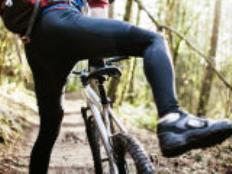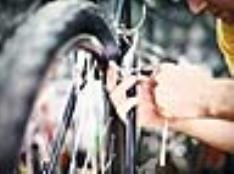
Despite being relatively safe, there is risk involved with riding a bike--no matter if you're just cruising on paths or putting in some serious training miles on the road. Generally this just means some road rash, but depending on the circumstance, bike crashes can be more of an ordeal.
Don't let this deter you from experiencing the joy of riding a bike--crashing is rare, and simply being aware of your surroundings can keep you safe the majority of the time. Sometimes though, the inevitable does happen (whether it's from clipping a wheel, getting a flat, collisions with a vehicle, etc.), so we've gathered 10 things to keep in mind if you find yourself in trouble.
Note: We're not physicians nor are we giving medical advice. If you find yourself in a life-threatening situation, call 911.
Find a Safe Area
This first point might sound obvious, but once you crash (no matter if a car is involved or not), make sure you move to the side of the bike path or road if you're able. Crawl if you have to--you don't want to risk not being seen by oncoming traffic. If you absolutely can't move to the side of the road and nobody is around to assist you, call 911 immediately.
Don't Panic
Now that you're on the side of the road, take a few deep breaths and try not to panic. Your system will be flooded with adrenaline, so your natural inclination will be to get up and ride away. Resist the urge, and take a seat to collect yourself.
Check Your Body
First, if you think you're seriously injured, don't move more than you have to--especially if your back or neck feels injured. Start slow and check your extremities. Can you move your arms and legs? Can you wiggle your fingers and toes? Road rash is always part of the equation, but are you bleeding excessively? Are any areas split open and exposed? Remember, if you aren't sure, it's always a good idea to call 911.
Check Your Head
Helmet technology has come a long way, but head injuries still occur in bike crashes. Take this example from the 2017 Tour of California (warning, it's hard to watch). Toms Skujiņš goes down on a decent, hits his head and unknowingly puts himself and other riders at risk as he displays obvious signs of concussion. Check the outside and inside of your helmet for signs of impact. If you're disoriented, do not get back on the bike.
Bike-Vehicle Crash
While this article mainly discusses what you should do if you crash by yourself, if you're hit by a car or any other vehicle, there's much more to keep in mind. This checklist from the San Francisco Bicycle Coalition is a great resource, and it outlines what you should do immediately after a crash, when the police arrive and in the days after a crash.
Check Your Bike
Let's say you're relatively unscathed and decide you can continue riding (or at least ride home). First, check your wheels to see if they're true and the tires hold air. Next, check your shifters and see if they're out of alignment, then check that your brakes work. Even if you're stuck in a single gear, that may be all you need to hobble your way home. Lastly, check the frame to see if there is any structural damage that may fail and potentially cause an additional crash on your way home. Generally, steel and aluminum fare better than carbon, but doublecheck all the tubing, joints and forks for obvious signs of damage (and look closely for hairline fractures too).
Once You're Home Safe
Tend to your injuries immediately. If your crash is somewhat severe, it's always a good idea to head to your local urgent care or ER and have them assess your status. They'll catch things you won't and will usually include x-rays to see if anything is seriously damaged.
Also, before you ride again, take your bike to your local bike shop and have them take a close look and the wheels, frame and components. Even if it was just a small spill, buy a new helmet too. Modern bike helmets are only rated for one impact , and once the structure is compromised, it's less effective in the next crash.
Take Time to Heal
We can't stress this point enough. You aren't being paid to ride your bike, so give your body some down time before you prematurely start riding again. Rushing back into training can stress injuries that need time to heal, and this can create nagging issues down the road that may limit your ability to ride. This is especially important if you have a concussion--get mentally right and complete the prescribed concussion protocol before attempting to ride post-crash. Additional brain injuries before fully healing can be life threatening.
READ THIS NEXT: How to Handle a Bike Accident With a Vehicle








Discuss This Article